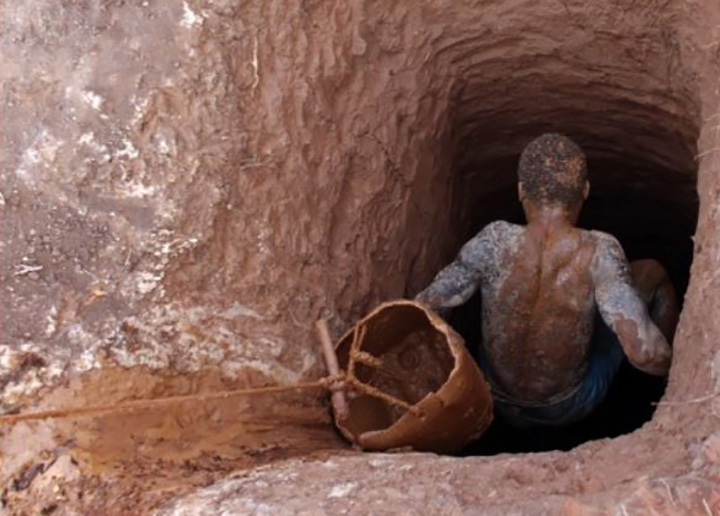By Dumisani Nyoni
AS part of measures to contain the spread of the COVID-19, players in different sectors of the economy in the country have resorted to virtual meetings to enforce social distancing.
For instance, some of them are using applications such as Zoom, Microsoft Teams among others to discuss important issues like strategizing for the future.
But for the mining sector, especially the artisanal and small-scale mining sub-sector, holding virtual meetings has not been easy as artisanal and small-scale miners are finding it hard to participate through such platforms.
This is partly because they are always in the bush.
Meetings are an essential part of business management since they provide a communication flow of information between the employer and employees. Through this information flow projects can move forward, tasks allocated, problems can be solved, disputes resolved, performance improved and teamwork enhanced.
The Zimbabwe Miners Federation (ZMF), an umbrella body for all small scale miners in the country, has been trying to engage artisanal miners using various online platforms to encourage them to formalise and regularise their operations, with little success.
The body has also been trying to encourage all miners to be inoculated against the COVID-19 pandemic but struggling.
According to COVID-19 regulations, only 50 people are allowed to gather.
ZMF chief executive officer Wellington Takavarasha said they were struggling to conduct virtual meetings with small-scale miners in the country due to issues to do with the affordability and their availability.
“It’s not easy (to conduct virtual meetings with small-scale miners) because most of them are in the bush. So Zoom meetings are for those technocrats but the actual miners will be in the bush,” he said.
There are 1,5 million small and artisanal miners in Zimbabwe, but only a tiny fraction runs registered or formalised operations.
ZMF spokesperson Dosman Mangisi added: “It’s difficult to have virtual meetings because most of our network in Zimbabwe is poor and the cost of data is also high.
“But in this COVID-19 period, we would like to applaud the government efforts for allowing a minimum of 50 people to meet where we pick people strategically. That’s how we have been managing.”
Turning to COVID-19 vaccination program, Mangisi said the response has been slow.
“Some miners are taking up COVID-19 vaccine. Yes, it’s a bit slow but they are taking some vaccines, I know quite a number who have been vaccinated. Also, they are participating in prevention measures of sanitisation,” he said.
To encourage vaccination uptake, Takavarasha said they have been trying to do outreach programs, educating miners on the importance of vaccination.
“Right now we are trying to do workshops to do with vaccination of miners. As Zimbabwe Miners Federation, we are trying to push for miners to be inoculated because most of them are not. So we are trying to make them aware through these programs. So we have written to the Ministry of Health and Child Care,” he said.
Meanwhile, Zimbabwe Diamond and Allied Minerals Workers Union general secretary Justice Chinhema said they will continue demanding Covid-19 allowances for the workers.
“If essential services are being awarded Covid-19 allowances, our gallant mining sons and daughters are equally essential service providers who are entitled to at least US$200 Covid-19 allowances,” he said.
Recently, workers in the mining industry were awarded an 11,36% salary increment following collective bargaining negotiations which saw the lowest paid employee in the sector earning ZWL$24,500 per month.
The new salary structure, which was negotiated by the Associated Mine Workers Union of Zimbabwe, the Chamber of Mines of Zimbabwe and the National Employment Council for the mining sector, is effective from 1 April 2021 to 30 June 2021.
Before the adjustment, the lowest paid employee in the mining sector was earning ZWL$22, 000 a month, while the highest was taking home ZWL$51, 025.74.
With the current adjustment, the highest paid employee will now be getting ZWL$56, 824.12.
Of the total amount, 50% will be paid in USD component which now moves from US$140 for the lowest paid to US$145. The remaining ZWL$12 500 will be paid as an RTGS component.
When combining all figures, it gives the lowest paid grade US$289.46 as calculated on the current bank rate.
“We feel Covid-19 allowance should be considered because we have seen the mining industry posting profits during the Covid-19 pandemic. Why don’t we go for Covid-19 allowance, appreciating what the workers have done during the deadly pandemic where everyone was at home?” Chinhema said.

